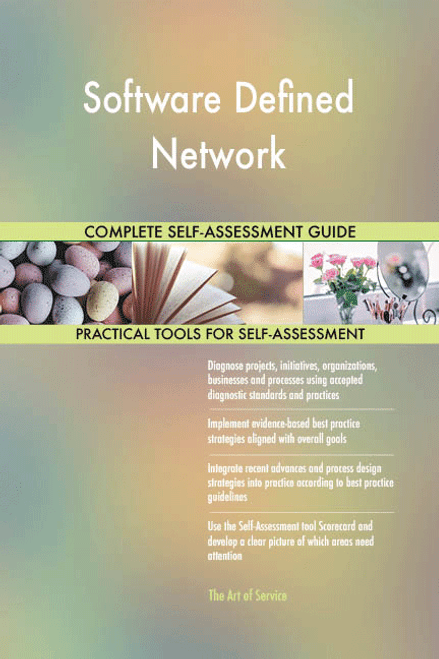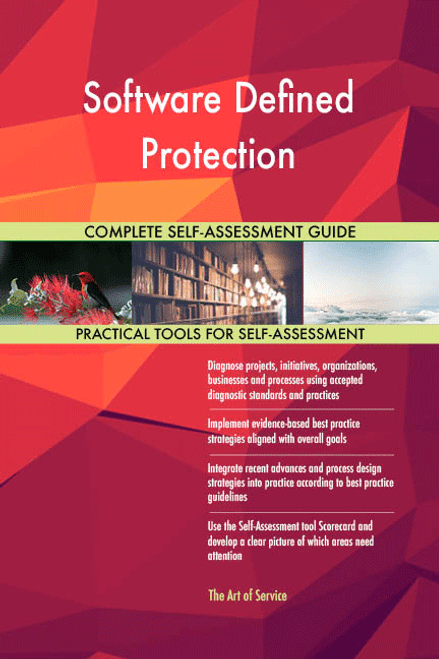Software Defined WAN has its roots in Software Defined networking (SDN), the underlying principle of which is to abstract the network hardware and transport characteristics from the applications that use the network.
More Uses of the Software-defined Toolkit:
- Lead: Machine Learning and AI (especially deep neural networks).
- Coordinate: work as a member of cross functional teams to design scalable, highly available, secure application solutions that leverage Cloud Services.
- Organize: partner with applications owners to design, develop and document solutions that comply with strategic Enterprise Architecture and guidelines in terms of your organization, information, and technical standpoint.
- Govern: continuously manage, monitor, and update architecture models as Business Needs evolve and additional Cloud Services become available.
- Methodize: Agile/safe Software Development methodologies and tools.
- Systematize: large scale optimization and Reinforcement Learning.
- Utilize cost/benefit models with mapping architecture to business KPIs.
- Systematize: Time Series Analysis and prediction.
- Govern: container technologies as Docker, Kubernetes, or mesosphere.
- Manage the software lifecycle of your deliverables from concept to operations.
- Translate organizational level Business Requirements and use cases into IT/IS infrastructure capabilities verified to meet the requirements.
- Lead optimizing Solution Architectures to manage cloud costs and identify cost control mechanisms.
- Systematize: Software Defined networks.
- Be accountable for designing and architecting network and security infrastructure; and Software Defined networking.
- Standardize: Data Mining and statistical learning.
- Head: work across organizations to help accelerate public and private Cloud Adoption.
- Generate migration roadmap across complex organizational structures.
- Confirm your corporation complies; its Software Defined solutions provide cost effective and easy to implement protection that is transparent to end users and simple for IT to administer and control.
- Formulate: target a fascination for Cloud Computing, virtualization, Software Defined networking.
- Head: Software Development engineering.
- Systematize: departmentData Science and system security.
- Govern: partner with bus to establish specific application Solution Architecture blueprints with a roadmap and steps on implementation.
- Coordinate: Data Driven improvements in healthcare.
- Standardize: graph and information network mining.
- Ensure you enable; lead Cloud Migration / hybrid lead cloud automation technologies.
- Steer: Software Defined networking security and micro segmentation.
- Pilot: Software Development management, networking.
- Organize: design solution independent architecture models that map business services to cloud application stacks.
- Drive storage solutions to meet market demands of hyper converged, converged, Software Defined Data Center or Cloud Storage Services.
Save time, empower your teams and effectively upgrade your processes with access to this practical Software Defined Toolkit and guide. Address common challenges with best-practice templates, step-by-step Work Plans and maturity diagnostics for any Software Defined related project.
Download the Toolkit and in Three Steps you will be guided from idea to implementation results.
The Toolkit contains the following practical and powerful enablers with new and updated Software Defined specific requirements:
STEP 1: Get your bearings
Start with...
- The latest quick edition of the Software Defined Self Assessment book in PDF containing 49 requirements to perform a quickscan, get an overview and share with stakeholders.
Organized in a Data Driven improvement cycle RDMAICS (Recognize, Define, Measure, Analyze, Improve, Control and Sustain), check the…
- Example pre-filled Self-Assessment Excel Dashboard to get familiar with results generation
Then find your goals...
STEP 2: Set concrete goals, tasks, dates and numbers you can track
Featuring 999 new and updated case-based questions, organized into seven core areas of Process Design, this Self-Assessment will help you identify areas in which Software Defined improvements can be made.
Examples; 10 of the 999 standard requirements:
- Who gets your output?
- What information qualified as important?
- What should you measure to verify efficiency gains?
- Can you integrate Quality Management and Risk Management?
- Is your strategy driving your strategy? Or is the way in which you allocate resources driving your strategy?
- What will drive Software Defined change?
- Have you identified your Software Defined Key Performance Indicators?
- Which Software Defined goals are the most important?
- Is the need for organizational change recognized?
- What is the standard for acceptable Software Defined performance?
Complete the self assessment, on your own or with a team in a workshop setting. Use the workbook together with the self assessment requirements spreadsheet:
- The workbook is the latest in-depth complete edition of the Software Defined book in PDF containing 994 requirements, which criteria correspond to the criteria in...
Your Software Defined self-assessment dashboard which gives you your dynamically prioritized projects-ready tool and shows your organization exactly what to do next:
- The Self-Assessment Excel Dashboard; with the Software Defined Self-Assessment and Scorecard you will develop a clear picture of which Software Defined areas need attention, which requirements you should focus on and who will be responsible for them:
- Shows your organization instant insight in areas for improvement: Auto generates reports, radar chart for maturity assessment, insights per process and participant and bespoke, ready to use, RACI Matrix
- Gives you a professional Dashboard to guide and perform a thorough Software Defined Self-Assessment
- Is secure: Ensures offline Data Protection of your Self-Assessment results
- Dynamically prioritized projects-ready RACI Matrix shows your organization exactly what to do next:
STEP 3: Implement, Track, follow up and revise strategy
The outcomes of STEP 2, the self assessment, are the inputs for STEP 3; Start and manage Software Defined projects with the 62 implementation resources:
- 62 step-by-step Software Defined Project Management Form Templates covering over 1500 Software Defined project requirements and success criteria:
Examples; 10 of the check box criteria:
- Cost Management Plan: Eac -estimate at completion, what is the total job expected to cost?
- Activity Cost Estimates: In which phase of the Acquisition Process cycle does source qualifications reside?
- Project Scope Statement: Will all Software Defined project issues be unconditionally tracked through the Issue Resolution process?
- Closing Process Group: Did the Software Defined project team have enough people to execute the Software Defined project plan?
- Source Selection Criteria: What are the guidelines regarding award without considerations?
- Scope Management Plan: Are Corrective Actions taken when actual results are substantially different from detailed Software Defined project plan (variances)?
- Initiating Process Group: During which stage of Risk planning are risks prioritized based on probability and impact?
- Cost Management Plan: Is your organization certified as a supplier, wholesaler, regular dealer, or manufacturer of corresponding products/supplies?
- Procurement Audit: Was a formal review of tenders received undertaken?
- Activity Cost Estimates: What procedures are put in place regarding bidding and cost comparisons, if any?
Step-by-step and complete Software Defined Project Management Forms and Templates including check box criteria and templates.
1.0 Initiating Process Group:
- 1.1 Software Defined project Charter
- 1.2 Stakeholder Register
- 1.3 Stakeholder Analysis Matrix
2.0 Planning Process Group:
- 2.1 Software Defined Project Management Plan
- 2.2 Scope Management Plan
- 2.3 Requirements Management Plan
- 2.4 Requirements Documentation
- 2.5 Requirements Traceability Matrix
- 2.6 Software Defined project Scope Statement
- 2.7 Assumption and Constraint Log
- 2.8 Work Breakdown Structure
- 2.9 WBS Dictionary
- 2.10 Schedule Management Plan
- 2.11 Activity List
- 2.12 Activity Attributes
- 2.13 Milestone List
- 2.14 Network Diagram
- 2.15 Activity Resource Requirements
- 2.16 Resource Breakdown Structure
- 2.17 Activity Duration Estimates
- 2.18 Duration Estimating Worksheet
- 2.19 Software Defined project Schedule
- 2.20 Cost Management Plan
- 2.21 Activity Cost Estimates
- 2.22 Cost Estimating Worksheet
- 2.23 Cost Baseline
- 2.24 Quality Management Plan
- 2.25 Quality Metrics
- 2.26 Process Improvement Plan
- 2.27 Responsibility Assignment Matrix
- 2.28 Roles and Responsibilities
- 2.29 Human Resource Management Plan
- 2.30 Communications Management Plan
- 2.31 Risk Management Plan
- 2.32 Risk Register
- 2.33 Probability and Impact Assessment
- 2.34 Probability and Impact Matrix
- 2.35 Risk Data Sheet
- 2.36 Procurement Management Plan
- 2.37 Source Selection Criteria
- 2.38 Stakeholder Management Plan
- 2.39 Change Management Plan
3.0 Executing Process Group:
- 3.1 Team Member Status Report
- 3.2 Change Request
- 3.3 Change Log
- 3.4 Decision Log
- 3.5 Quality Audit
- 3.6 Team Directory
- 3.7 Team Operating Agreement
- 3.8 Team Performance Assessment
- 3.9 Team Member Performance Assessment
- 3.10 Issue Log
4.0 Monitoring and Controlling Process Group:
- 4.1 Software Defined project Performance Report
- 4.2 Variance Analysis
- 4.3 Earned Value Status
- 4.4 Risk Audit
- 4.5 Contractor Status Report
- 4.6 Formal Acceptance
5.0 Closing Process Group:
- 5.1 Procurement Audit
- 5.2 Contract Close-Out
- 5.3 Software Defined project or Phase Close-Out
- 5.4 Lessons Learned
Results
With this Three Step process you will have all the tools you need for any Software Defined project with this in-depth Software Defined Toolkit.
In using the Toolkit you will be better able to:
- Diagnose Software Defined projects, initiatives, organizations, businesses and processes using accepted diagnostic standards and practices
- Implement evidence-based best practice strategies aligned with overall goals
- Integrate recent advances in Software Defined and put Process Design strategies into practice according to best practice guidelines
Defining, designing, creating, and implementing a process to solve a business challenge or meet a business objective is the most valuable role; In EVERY company, organization and department.
Unless you are talking a one-time, single-use project within a business, there should be a process. Whether that process is managed and implemented by humans, AI, or a combination of the two, it needs to be designed by someone with a complex enough perspective to ask the right questions. Someone capable of asking the right questions and step back and say, 'What are we really trying to accomplish here? And is there a different way to look at it?'
This Toolkit empowers people to do just that - whether their title is entrepreneur, manager, consultant, (Vice-)President, CxO etc... - they are the people who rule the future. They are the person who asks the right questions to make Software Defined investments work better.
This Software Defined All-Inclusive Toolkit enables You to be that person.
Includes lifetime updates
Every self assessment comes with Lifetime Updates and Lifetime Free Updated Books. Lifetime Updates is an industry-first feature which allows you to receive verified self assessment updates, ensuring you always have the most accurate information at your fingertips.







